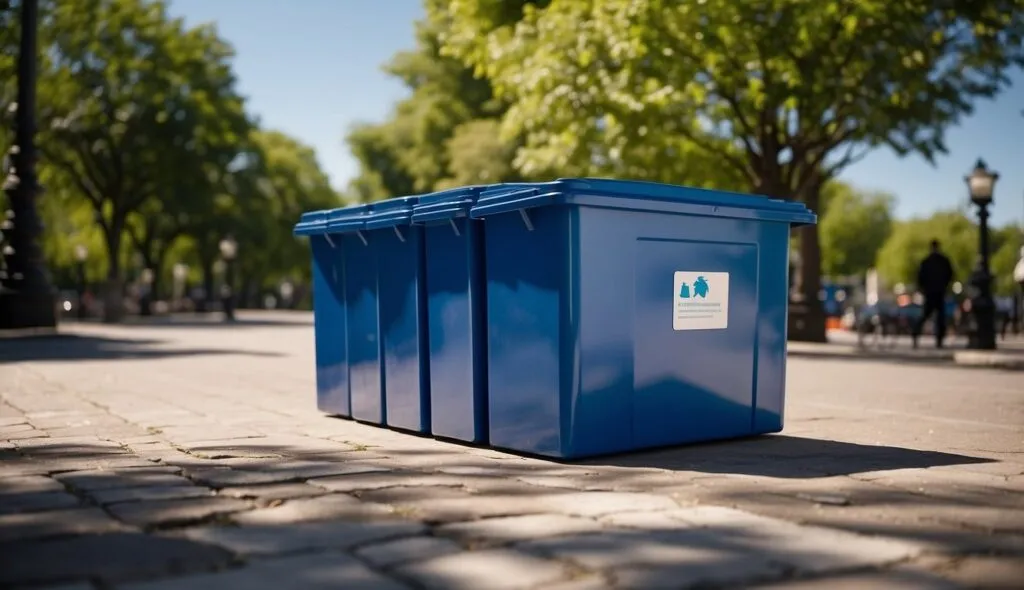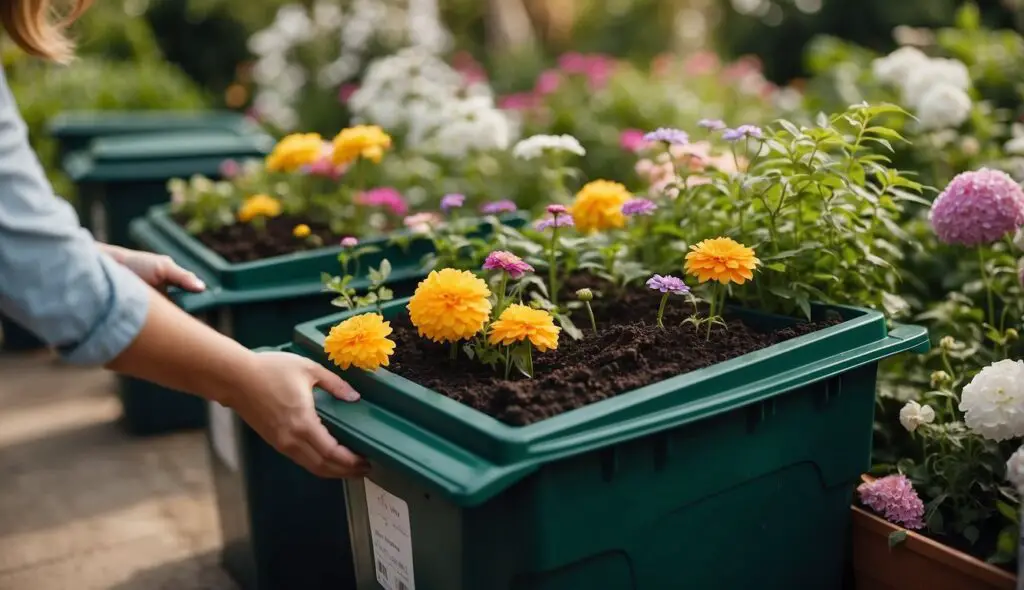As we become more aware of the impact of our actions on the environment, many of us are looking for ways to live more sustainably. One way to do this is by creating an eco-friendly garden. Eco garden repurposing is a great way to reduce waste and create a beautiful outdoor space that is good for the planet.
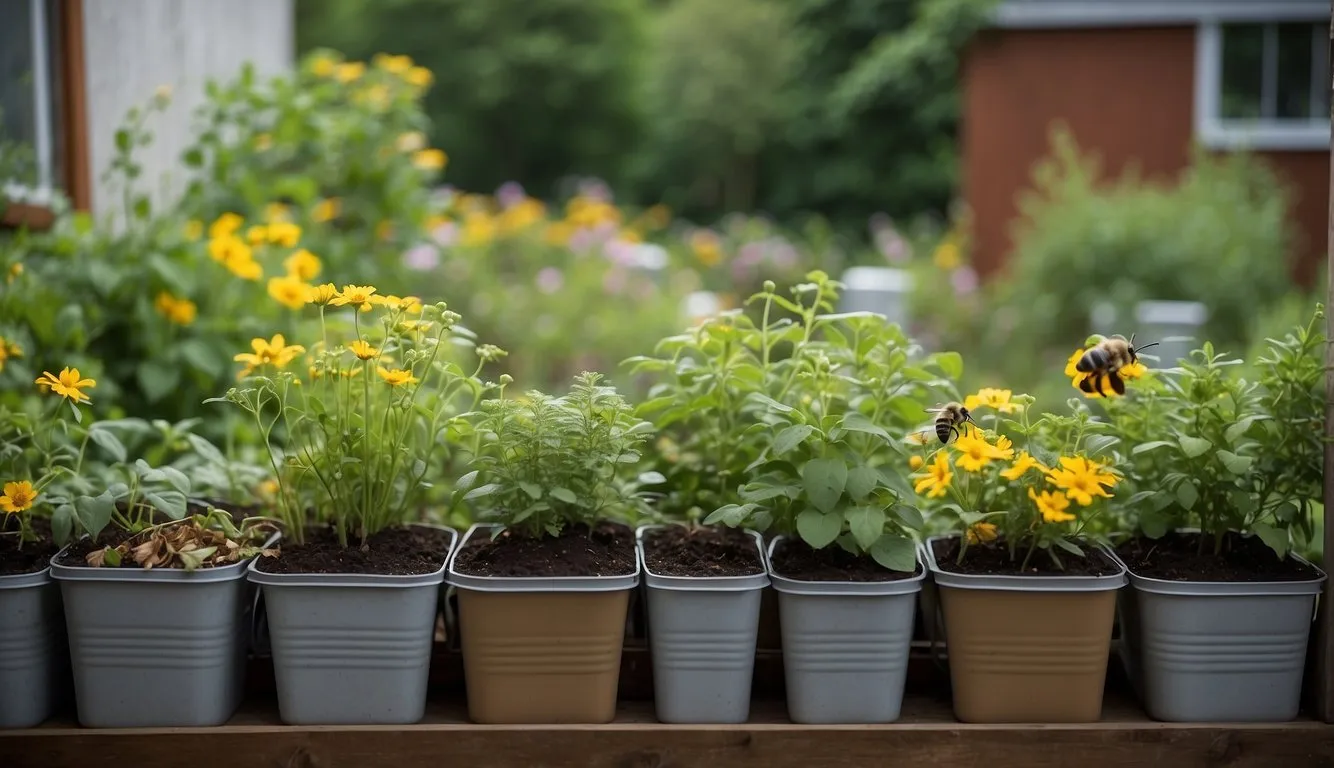
Planning Your Eco-Friendly Garden is the first step in creating an eco garden. You need to consider the size of your garden, the amount of sunlight it receives, and the types of plants you want to grow. You should also think about the materials you will use to create your garden. Choosing the right containers is important for creating an eco-friendly garden. You can use recycled materials like old buckets, tires, and even old furniture to create unique and beautiful planters.
Table of Contents
Key Takeaways
- Planning your eco-friendly garden is the first step
- Choosing the right containers is important for an eco-friendly garden
- Incorporating upcycled elements and composting can help create a sustainable garden.
Planning Your Eco-Friendly Garden
When planning your eco-friendly garden, there are several things to consider to ensure that your garden is sustainable and environmentally friendly. We recommend using native plants and xeriscaping techniques to conserve water and reduce maintenance. Native plants are adapted to the local climate and require less water and maintenance than non-native plants. Xeriscaping techniques, such as using mulch and drip irrigation, can help reduce water usage and promote healthy plant growth.
Another important consideration when planning your eco-friendly garden is the use of repurposed items for planters. By using repurposed items, such as old tires, pallets, and containers, you can reduce waste and create unique and interesting planters for your garden. We recommend checking out ECOgardener’s upcycling and recycling ideas for your garden for inspiration.
When selecting plants for your garden, we recommend choosing plants that are well-suited to your local climate and soil conditions. This will help reduce the need for fertilizers and pesticides, which can be harmful to the environment. Additionally, planting a variety of plants can help promote biodiversity and attract beneficial insects and wildlife to your garden.
Finally, when planning your eco-friendly garden, it’s important to consider the layout and design of your garden. We recommend using companion planting techniques to help plants grow and thrive together. For example, planting herbs and flowers together can help repel pests and attract pollinators. Additionally, using raised beds and vertical gardening techniques can help maximize space and reduce water usage.
By following these tips and techniques, you can create a beautiful and sustainable eco-friendly garden that is both environmentally friendly and low-maintenance.
Choosing the Right Containers
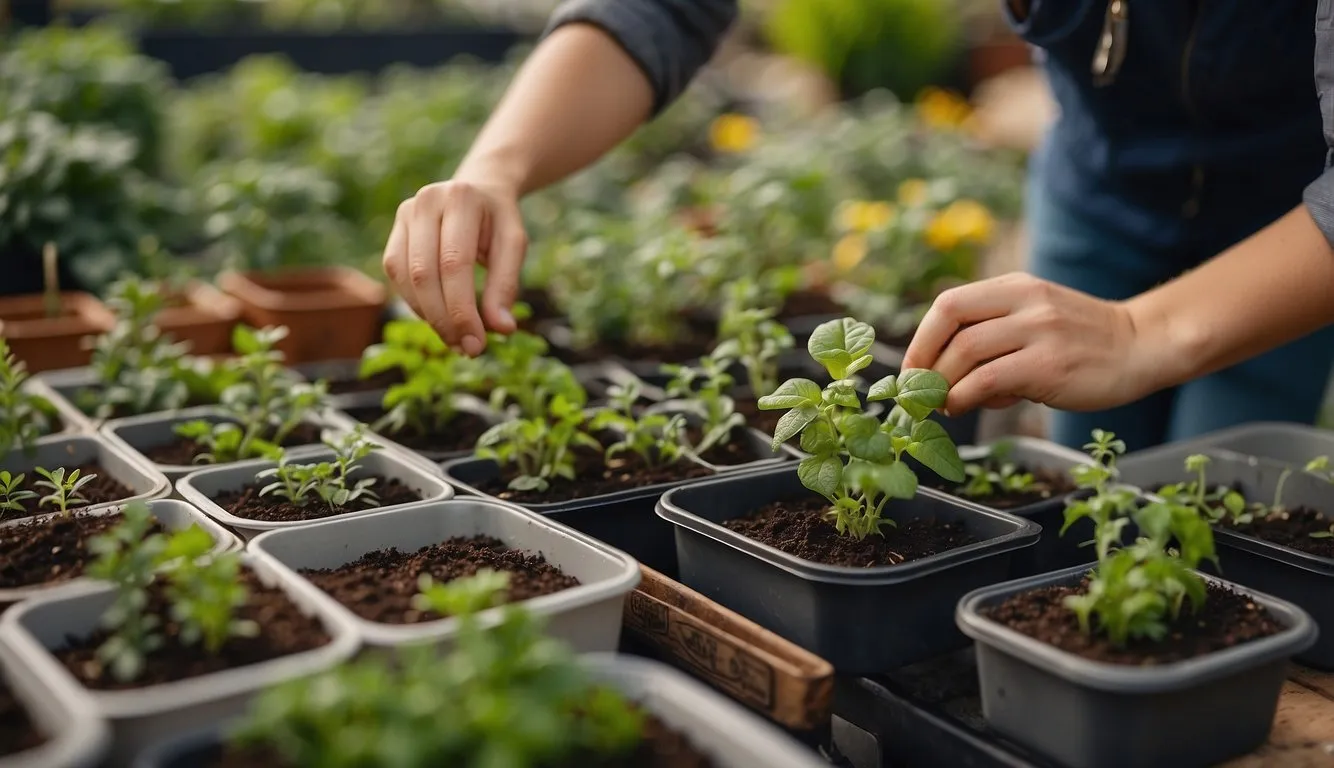
When it comes to repurposing containers for your eco garden, the possibilities are endless. From upcycled cans to tires and pallets, there are many materials you can use to create unique and sustainable planters. However, it’s important to choose the right containers to ensure your plants thrive.
Repurposing Common Household Items
One of the easiest ways to find containers for your garden is by repurposing common household items. For example, old mugs, teapots, and bowls can be used as planters for small herbs and succulents. You can also use old buckets, baskets, and crates to create larger planters for vegetables and flowers.
Ensuring Proper Drainage
No matter what type of container you choose, it’s important to ensure proper drainage to prevent water from pooling and causing root rot. You can create drainage holes in repurposed containers using a drill or hammer and nail. Alternatively, you can add a layer of gravel or pebbles to the bottom of the container to improve drainage.
When it comes to choosing the right containers for your eco garden, it’s important to consider the size and material of the container, as well as its drainage capabilities. By repurposing common household items and ensuring proper drainage, you can create unique and sustainable planters that will help your garden thrive.
Incorporating Upcycled Elements
At the heart of eco-friendly gardening is the idea of repurposing and upcycling. Incorporating upcycled elements into your garden design is a great way to add unique and sustainable features to your outdoor space. Here are some ideas to get you started:
Creating Garden Art
Upcycling old items to create garden art is a great way to add personality and character to your garden. For example, old bicycle wheels can be transformed into a stunning wind chime that adds a touch of whimsy to your garden. Similarly, old fence panels or cinder blocks can be painted and used as a canvas for your own unique garden mural.
Building Functional Features
Upcycling old furniture or materials to create functional features in your garden is not only sustainable, but it can also be cost-effective. For example, old ladders can be repurposed into a unique garden trellis for climbing plants. Similarly, old pallets can be transformed into a stylish and functional compost bin.
When incorporating upcycled elements into your garden, it’s important to keep in mind the materials you are using. Make sure the materials are safe for outdoor use and won’t leach any harmful chemicals into your garden soil. Additionally, be creative and have fun with your designs. Upcycling is all about finding new uses for old items and creating something unique and beautiful in the process.
Composting and Soil Health
Composting is one of the most effective ways to repurpose garden waste and improve soil health. By breaking down organic materials into nutrient-rich compost, we can reduce our carbon footprint and minimize the amount of food waste that ends up in landfills.
Setting Up a Compost Bin
Setting up a compost bin is easy and requires minimal effort. Start by choosing a location that is easily accessible and gets plenty of sunlight. Next, choose a container that is large enough to hold your garden waste and has adequate ventilation. You can use a variety of materials for your compost bin, including wood, plastic, or metal.
Once you have your container, start filling it with a mixture of brown and green materials. Brown materials include things like dead leaves, twigs, and branches, while green materials include things like grass clippings, vegetable scraps, and coffee grounds. Be sure to add water to keep the pile moist, and turn it regularly to promote decomposition.
Benefits of Composting
Composting offers a range of benefits for both the environment and your garden. By repurposing garden waste and food scraps, we can reduce the amount of waste that ends up in landfills and minimize our carbon footprint. Composting also helps to improve soil health by adding nutrients and improving soil structure.
Compost can be used as a natural fertilizer and helps to promote healthy plant growth. It can also be used as a mulch to help retain moisture and suppress weeds. By using organic methods like composting and mulching, we can reduce our reliance on synthetic fertilizers and pesticides, which can be harmful to the environment.
In conclusion, composting is an easy and effective way to repurpose garden waste and improve soil health. By setting up a compost bin and using the resulting compost as a natural fertilizer and mulch, we can reduce our carbon footprint and promote a healthy, thriving garden.
Maintaining Your Eco-Garden
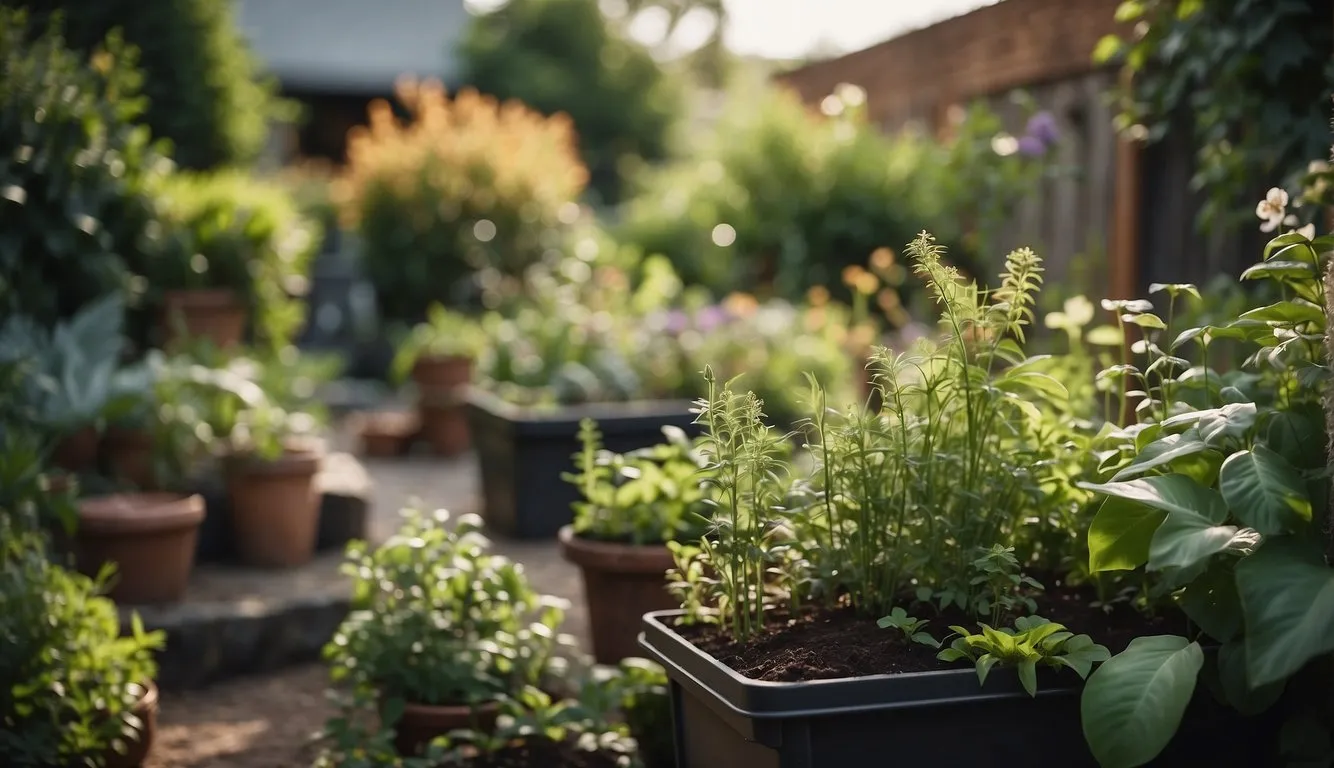
Maintaining an eco-garden is a crucial aspect of ensuring that it remains healthy and sustainable. Here are some tips on how to maintain your eco-garden effectively:
Watering
Watering is essential for the growth of plants. However, overwatering can lead to root rot and other issues. Therefore, it is essential to water your plants according to their needs. One way to determine when to water your plants is to stick your finger into the soil. If the top inch of soil is dry, it’s time to water. Another way is to use a moisture meter.
Pruning
Pruning is necessary to keep your plants healthy and promote growth. It involves removing dead or diseased branches, leaves, and flowers. Pruning also helps to shape your plants and prevent them from becoming too leggy. When pruning, make sure to use sharp, clean tools to avoid damaging your plants.
Grass Clippings and Fallen Leaves
Grass clippings and fallen leaves can be used as mulch in your eco-garden. Mulch helps to retain moisture, suppress weeds, and provide nutrients to your plants. Spread a layer of grass clippings or fallen leaves around your plants, making sure not to cover the stems or leaves.
Potted Plants
Potted plants require additional care to ensure they remain healthy. Make sure to choose the right size pot for your plants and use a high-quality potting mix. Water your potted plants regularly and fertilize them according to their needs.
Veggies
Growing vegetables in your eco-garden is a great way to reduce your carbon footprint and provide fresh, healthy food for your family. To ensure a bountiful harvest, make sure to plant your veggies in nutrient-rich soil and provide them with adequate water and sunlight. It’s also essential to keep an eye out for pests and diseases and take action promptly if necessary.
Advantages
Maintaining an eco-garden has numerous advantages. It helps to reduce your carbon footprint, provides fresh, healthy food, and promotes biodiversity. Additionally, eco-gardening can be a relaxing and rewarding hobby that helps you connect with nature.
By following these tips, we can maintain a healthy and sustainable eco-garden that benefits both us and the environment.
Conclusion
In conclusion, eco garden repurposing is a great way to achieve sustainable gardening while also reducing waste and saving money. By using repurposed materials and recycling ideas, we can create a beautiful and functional garden that is also eco-friendly.
Through our research, we found that there are many cost-effective ways to repurpose materials for the garden. For example, plastic bottles can be transformed into mini greenhouses for seedlings, while cardboard and newspaper can be used as seedling cups. These ideas not only reduce waste but also provide an easy and inexpensive way to begin gardening.
We also discovered that there are many other ways to make a garden more sustainable. For instance, we can reduce water waste by using drip irrigation systems and planting drought-tolerant plants. We can also use organic fertilizers and pest control methods to avoid harmful chemicals.
Overall, eco garden repurposing is a great way to create a beautiful and functional garden while also being mindful of the environment. By using recycled materials and sustainable gardening practices, we can reduce waste, save money, and help create a healthier planet.
Frequently Asked Questions
How can I create a sustainable garden using repurposed materials?
Creating a sustainable garden using repurposed materials is a great way to reduce waste and save money. Start by assessing the items you already have at home that can be repurposed for your garden. For example, old tires can be turned into planters, and pallets can be used to create raised garden beds. You can also use broken ceramics or glass to create garden mosaics. Be creative and have fun with it!
What are some creative ideas for upcycling in my garden?
There are endless creative ideas for upcycling in your garden. You can turn old ladders into trellises, use old gutters as planters, and even turn an old bathtub into a pond. Another idea is to use old silverware to create garden markers. The possibilities are endless, so let your imagination run wild!
What supplies do I need to start an eco-friendly garden repurposing project?
Starting an eco-friendly garden repurposing project doesn’t require a lot of supplies. You’ll need basic gardening tools such as gloves, a shovel, and a rake. You’ll also need the items you plan to repurpose, such as old containers, furniture, and decor. If you plan to use power tools, make sure to use them safely and follow all instructions.
How do I incorporate recycled items into my garden design?
Incorporating recycled items into your garden design is easy. Start by choosing items that fit your garden’s theme and color scheme. For example, if you have a rustic garden, you can use old wooden crates as planters. If you have a beach-themed garden, you can use old surfboards as decor. You can also use recycled items to create garden paths, seating areas, and water features.
What are the benefits of an upcycled garden?
There are many benefits to having an upcycled garden. First, it’s eco-friendly and reduces waste. Second, it’s cost-effective and can save you money. Third, it’s unique and adds character to your garden. Fourth, it’s a fun and creative way to express yourself. Finally, it’s a great way to inspire others to live a more sustainable lifestyle.
How can I repurpose an old garden table into a functional garden feature?
Repurposing an old garden table into a functional garden feature is easy. You can turn it into a potting bench by adding hooks for tools and shelves for pots. You can also turn it into a mini greenhouse by adding a glass top and sides. Another idea is to turn it into a fountain by adding a water feature. Use your imagination and create a functional garden feature that fits your needs.

